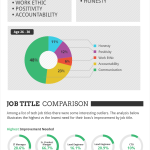
Only in the movies do groups come together and magically coalesce as if they were long lost soulmates, destined to come together for the greater good. In reality, things are often a bit less smooth. In most cases, teams go through a definable set of stages—something that Psychologist and professor Bruce Tuckman identified and developed a model for back in 1963. Tuckman’s “stages of group development” (sometimes referred to as “team” development) progress through the following phases: Forming, Storming, Norming, and Performing. Understanding the steps along the way can be helpful in speeding up the process since you’ll know what…

















